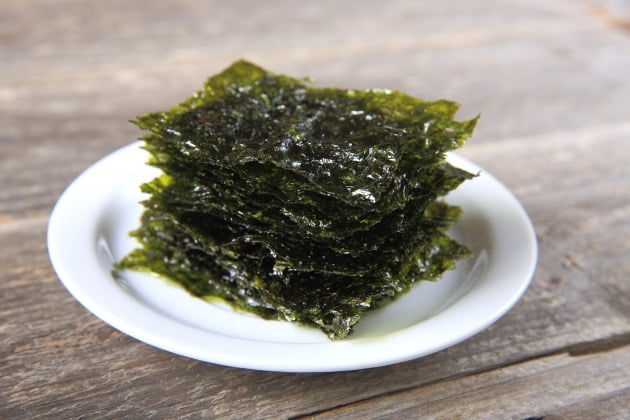
Last year, the export value of laver surpassed $600 million for the first time, reaching a record high. It set a new record three years after breaking the $500 million mark in 2017. This is the result of a sharp increase in the consumption of seaweed not only in traditional countries such as China and Japan, but also in the Western world, which called seaweed “sea weed”.
The US and Europe are also enthusiastic about’Korean super food’

Photo = Getty Image Bank
According to the Ministry of Oceans and Fisheries on the 7th, last year’s seafood exports amounted to $2.32 billion (2.5 trillion won), down 7.4% from $2.51 billion last year. Due to the novel coronavirus infection (Corona 19), exports of tuna, abalone, flatfish, etc., which are an item for eating out, were greatly affected. On the other hand, as domestic consumption of seafood increased, exports of processed products such as seasoned laver (12.9%), fish cake (2.0%), prepared products such as laver snacks (9.5%), and canned food (10.2%) such as canned tuna rose sharply.
Kim, who has been ranked No. 1 in seafood export items every year, recorded $600 million, an increase of $20 million from the previous year ($580 million). This is the highest performance ever. As of the first half of the year, exports of laver to the US ($69.09 million) surpassed the exports to Japan ($59.61 million) for the first time. By country, the order was the United States, Japan, China, Thailand, and Taiwan.
It is an encouraging achievement that the US has emerged as the number one importer of Korean laver, not Japan and China, which traditionally enjoyed laver. A food industry official said, “More than 90% of Korean laver exported to the US is in the form of seasoned laver, and is mainly used as a snack rather than rice and laver together.” Popular”. In the United States and Europe, laver is recognized as a’super food’ with much higher protein content than general seaweed and relatively low calories, and demand is steadily increasing, mainly for seasoned seaweed and seaweed snacks.
Exporting countries tripled… Popular still in Asia
It was in 2017 that Korean laver began to be recognized in earnest in the global market. The International Food Standards Committee (CODEX) has adopted the’Laver Product Specification’ proposed by Korea as the Asian standard laver standard. Thanks to this, the number of countries that buy Korean laver is on the rise. It nearly tripled from 49 in 2007 to 136 in 2018.
In Japan, dried laver and seasoned laver are imported evenly. As the culture of consuming high-quality Korean laver with alcohol and rice has spread, Korean laver accounts for 80% of all imported laver. In China, seasoned seaweed is consumed like sweets, mainly among the younger generation, and kimbap and sushi nori are purchased to make Korean-style gimbap in Korean dramas.
Kim is also very popular in Southeast Asia. Distribution stores in Vietnam and Indonesia are increasingly equipped with separate sales corners for’seaweed’. Thailand is increasing its global market share by mainly importing Korean dried laver and then processing and exporting it into confectionery. An official from the Ministry of Maritime Affairs and Fisheries explained, “The Korean government has also actively implemented various support measures to increase the market share of processed laver foods with high added value, and has begun to achieve the desired results.”
Reporter Seong Soo-young [email protected]
Ⓒ Hankyung.com prohibits unauthorized reproduction and redistribution
